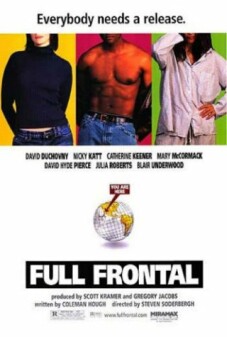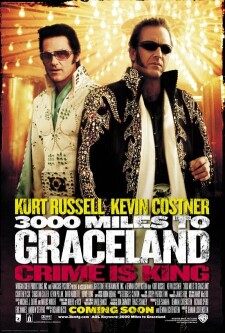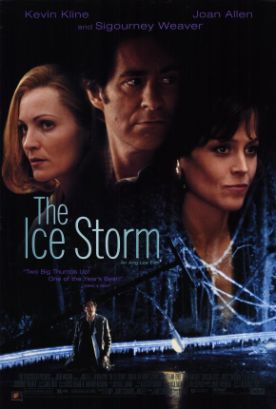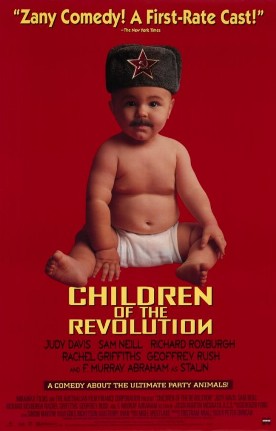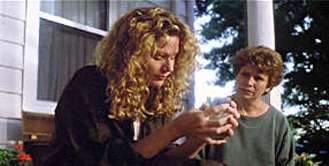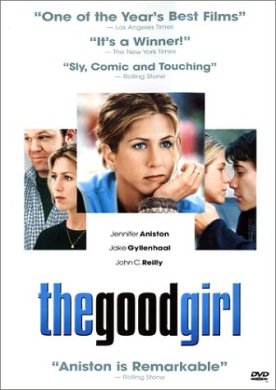Full Frontal
Here’s the idea behind Full Frontal, directed by Hollywood golden boy Steven Soderbergh, a man widely regarded as being able to extrude from his fertile imagination “art” which is also commercial, and so to square the circle in film-industry terms. A fictional director called Gus DeLaurio (David Duchovny) is said to be the center of interest of a group of voiceovers starting out as if in a therapy session. And when the film proper begins it is as Gus’s film, called Rendezvous, with the opening credits listing the names of the fictional actors. Rendezvous is a slickly packaged interracial romance starring Francesca (Julia Roberts) and Calvin (Blair Underwood). We see enough of this film-within-a-film to understand that the affair begins as an interview by Francesca/Julia’s character (who is called Catherine) and Calvin/Blair’s (who is called Nicholas) on a transcontinental flight.
Intercut with these scenes from the fictional film are deliberately poor quality (and therefore arty) video footage of a day in the life of some of the allegedly real people making it or in some way associated with it, who are of course every bit as fictional as Nicholas and Catherine or Francesca and Calvin. These include a screenwriter, Carl Bright (David Hyde Pierce), whose day job is at Los Angeles magazine (for which the fictional Catherine is said to be a reporter), and his wife Lee (Catherine Keener), who begins the day by writing her husband a letter to tell him that she is leaving him. She puts it under the morning papers on the breakfast table and goes to work at an advertising agency which is laying off people. She spends the day amusing herself by making those she is firing do silly or humiliating things. Presumably she is on the point of some kind of crack-up.
This may have something to do with the fact that she is having a tense and not very enjoyable affair with Calvin and a significant birthday. Her sister, Linda (Mary McCormack), a masseuse who works under the name of Ann, arranges to have lunch with her to celebrate the birthday. Linda/Ann is planning a rendezvous in Tucson with a man she has met on the Internet, but first she has to give Gus a massage in his hotel room. He offers her $500 for a sexual favor, which she accepts with the idea of buying a nice dress for Tucson. Meanwhile and unbeknownst to her her date, another screenwriter called Arty but who calls himself Ed on the Internet (Enrico Colantonio), is preparing for the opening night of his new play, The Sound and the Fuhrer, with a neurotic, narcissistic method-acting Hitler (Nicky Katt) who is a tyrant on the set.
At intervals we visit the set of yet another movie-within-a-movie — or a movie-within- the-movie-within-the-movie — as the action of Rendezvous takes us to the set of a cop-thriller where an obviously smitten Catherine (who is really Francesca) watches as Nicholas (who is really Calvin) shoots a chase scene with his co-star, Brad Pitt (who is, miraculously, himself). There are also scenes of Calvin with Lee and Calvin trying to sell a screenplay of his own to various backers around town. Off camera, Francesca, who is supposed to be as big a star as, well, Julia Roberts, meets a humble lighting man who worked on the set of The Duchess of Malfi when she was in summer stock. He gives her the star suck-up and she starts an affair with him.
I could go on, but you get the idea. When Soderbergh takes a break from such wildly successful commercial projects as Erin Brockovich or Ocean’s Eleven to do art, he is nothing if not artful. And, just for fun, he has Terence Stamp wandering into this movie, in character, from The Limey (which, if this is not getting way too complicated, itself included shots from another movie Stamp had done in the 1960s). Like Memento or Mulholland Drive, in other words, Full Frontal is an example of art as puzzle, but its complications make even those two films look simple by comparison. After the close credits, we see Brad Pitt, on the worst quality video yet, pitching to an unseen interlocutor the story of the fifth (or sixth) movie that Full Frontal comprises by saying that “this is where you see me putting all the pieces together.”
Of course putting all the pieces together is what we have had to do too, and as a mental exercise it bears the same relation to art as a jigsaw. I’m afraid that the upshot of it all is really nothing more than the mere banality that everything in Hollywood (or perhaps life itself?) is a performance — a proposition whose interest depends on a touching and child-like faith, in spite of the author’s years in Tinseltown, in some mythical authenticity that all these multiple layers of performance must be obscuring. If, like me, you regard the authentic selves of a bunch of sybaritic and self-indulgent movie-people, whether or not they exist, as being of even less interest than their seemingly endless repertoire of roles, the movie won’t do much for you beyond the pleasure it may afford to inveterate puzzle-solvers.
Discover more from James Bowman
Subscribe to get the latest posts to your email.

